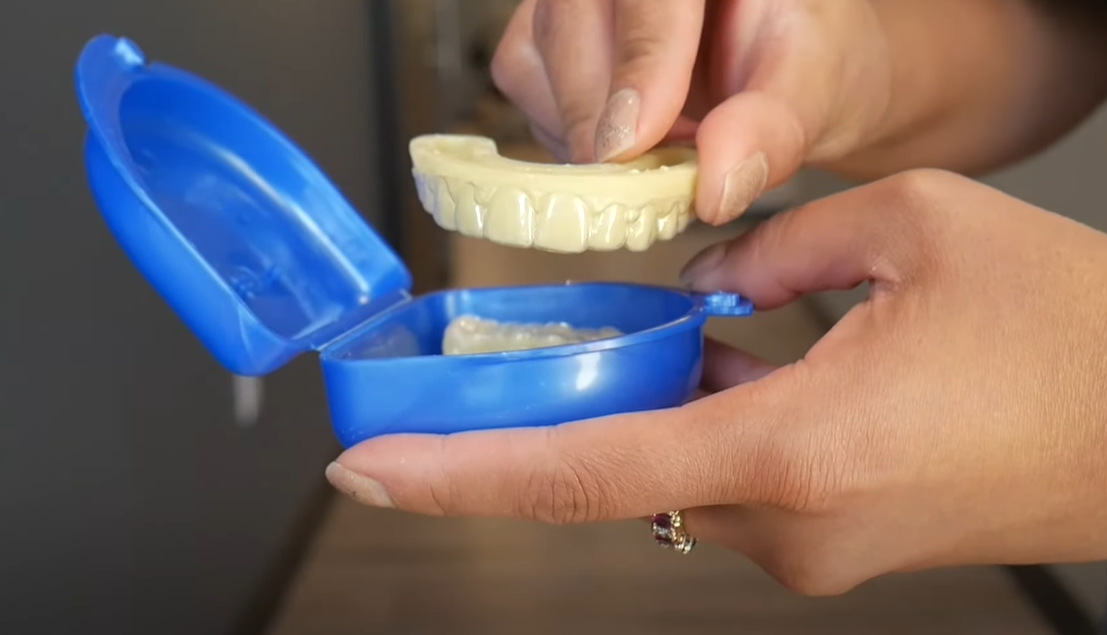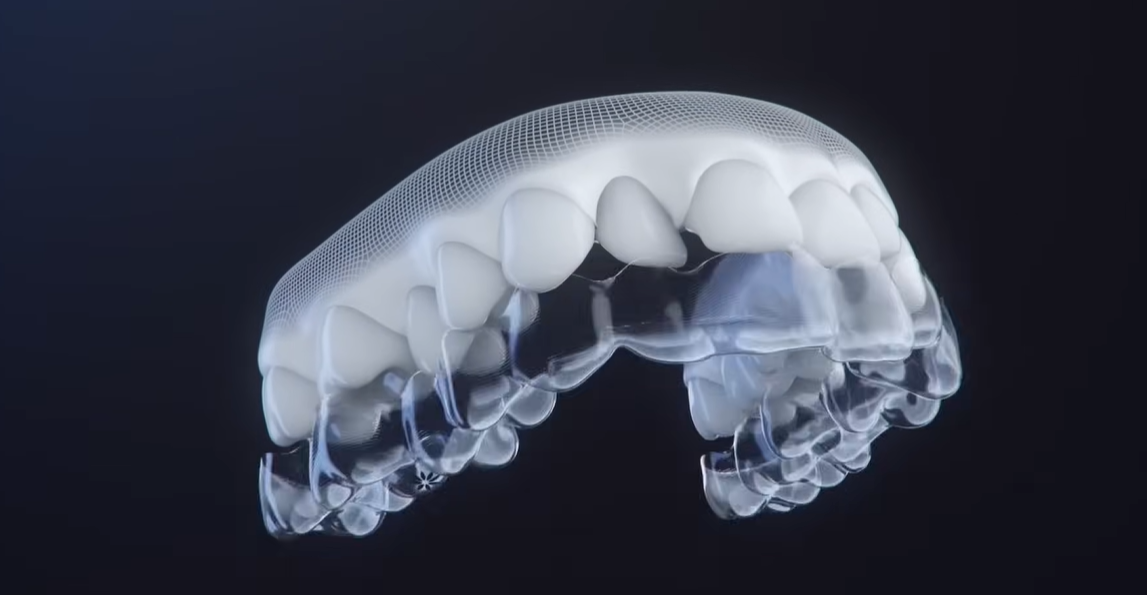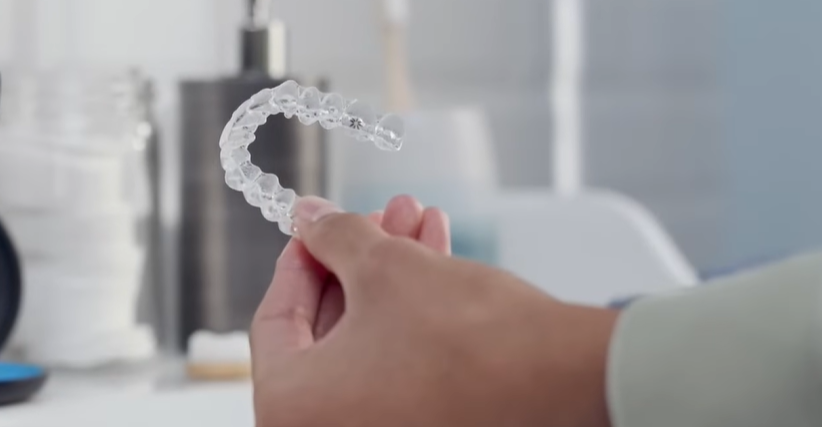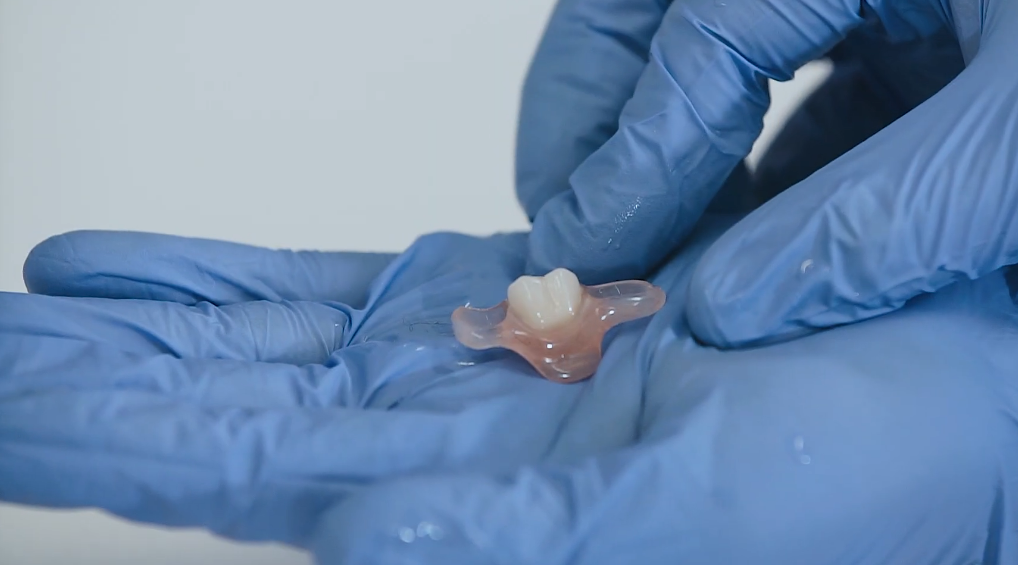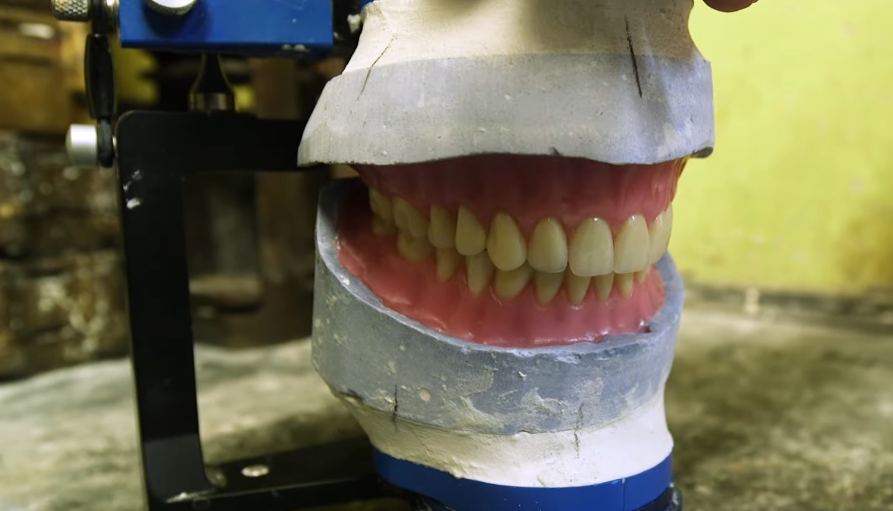If you buy through links on our site, we may earn a small affiliate commission to help support the blog - at no extra cost to you. It never influences our product selection process. Thank you!
Wondering how many appointments before getting braces you’ll need to schedule? The journey to a straighter smile isn’t a one-and-done process—it requires several strategic visits to your orthodontist before those brackets are finally secured.
From your initial consultation to the exciting day when your braces are placed, you’ll likely attend 2-4 appointments. These visits are crucial for proper assessment, treatment planning, and preparation of your teeth. Each step ensures your orthodontic treatment will be effective and customized specifically to your unique dental needs. If you’re considering braces for yourself or your child, understanding this timeline can help you plan accordingly and know exactly what to expect.
The Braces Journey: Understanding the Timeline
Initial Consultation (Week 0)
The braces journey begins with your initial consultation appointment. During this first visit, your orthodontist examines your teeth, takes preliminary x-rays, and discusses your concerns and goals. Many patients feel anxious before this appointment, but it’s typically painless and straightforward. Dr. Todd B. Harris often tells patients, “This visit is just about gathering information and creating a partnership for your smile transformation.” Your orthodontist explains potential treatment options based on your exact dental issues and answers any questions you might have about the process.
Records Appointment (Weeks 1-3)
Following your consultation, a records appointment is scheduled 1-3 weeks later. This comprehensive visit includes taking detailed impressions, photographs, and specialized x-rays to create your personalized treatment plan. These records serve as the blueprint for your entire orthodontic treatment. The orthodontist uses these diagnostic tools to analyze your bite, jaw alignment, and tooth positions from multiple angles. Most records appointments take 45-60 minutes to complete, ensuring your orthodontist captures all necessary information for precise treatment planning.
Treatment Planning (Weeks 3-4)
Behind the scenes, your orthodontist develops your customized treatment plan using the records collected. This phase doesn’t require your presence but represents a critical period where your orthodontist analyzes your dental structure, determines the optimal tooth movements, and selects the appropriate orthodontic system for your needs. Treatment planning typically takes 1-2 weeks as your orthodontist carefully considers factors like tooth extraction needs, elastics requirements, and treatment duration estimates. Patient Emma shared, “I appreciated knowing my orthodontist was taking time to create a plan specifically for my teeth rather than using a one-size-fits-all approach.”
Pre-Braces Appointment (Weeks 4-6)
Some patients require a pre-braces appointment where the orthodontist discusses the finalized treatment plan and addresses any preliminary dental work needed. Your orthodontist reviews expected outcomes, treatment duration, and cost considerations during this 30-minute visit. This appointment also covers essential oral hygiene instructions and dietary modifications you’ll need to carry out once braces are placed. Patients who need tooth extractions or other dental work receive referrals during this appointment to complete these procedures before braces placement.
Braces Placement Day (Weeks 6-8)
The day your braces are finally placed typically occurs 6-8 weeks after your initial consultation. This appointment takes 1-2 hours as your orthodontist carefully bonds brackets to each tooth and threads the archwires. Your teeth are thoroughly cleaned and conditioned before bracket placement to ensure proper adhesion. Dr. Harris emphasizes to patients, “While the appointment itself is longer than others, most patients experience only minimal discomfort during the actual placement process.” You’ll leave with your new braces, care instructions, and any necessary supplies like wax or specialized cleaning tools.
Initial Consultation: Your First Step

The orthodontic journey begins with an initial consultation appointment. During this first visit, your orthodontist evaluates your dental health, examines your bite, and discusses your treatment goals to determine if braces are the right solution for your exact needs.
What to Expect During This Appointment
Your orthodontist will conduct a comprehensive examination of your teeth, gums, and jaw during the initial consultation. This thorough assessment helps identify any underlying oral health issues that might affect your treatment. The doctor will ask about your concerns and explain various treatment options available to you, including different types of braces, estimated treatment duration, and any necessary preparation steps. Many patients find this consultation reassuring, as it provides clarity about the entire orthodontic process.
Dr. Harris often shares that “patients typically leave the initial consultation feeling more confident about their decision to pursue orthodontic treatment once they understand the personalized approach we take with each case.”
Records and Documentation Process
Following your initial consultation, your orthodontist schedules one or more appointments for gathering diagnostic records. These appointments involve taking detailed X-rays, photographs, and either traditional dental impressions or modern digital scans of your teeth. All these records serve as essential tools for your orthodontist to develop a customized treatment plan customized to your exact dental structure and needs.
The documentation process typically requires just one appointment, though complex cases might necessitate additional visits. One patient, Sarah, noted that she was surprised by how quick and comfortable the digital scanning process was compared to the traditional impression method she’d experienced years earlier. These comprehensive records allow your orthodontist to analyze your case from multiple angles and design the most effective treatment strategy before any braces are applied.
Pre-Treatment Appointments: Setting the Foundation

Pre-treatment appointments establish the groundwork for your successful orthodontic journey. Most patients require 2-4 appointments before braces are actually placed, each serving a exact purpose in creating your personalized treatment plan.
Comprehensive Examination and X-rays
Your initial visit involves a thorough clinical examination where the orthodontist evaluates your teeth, gums, and jaw alignment. During this appointment, detailed X-rays and 3D scans capture images of your dental structure, revealing the position of teeth and jawbones beneath the surface. These diagnostic tools help identify exact orthodontic issues that aren’t visible to the naked eye. Digital scans or traditional impressions create precise models of your teeth, giving the orthodontist an accurate blueprint for designing your custom treatment.
Sarah, a recent patient of ours, was surprised by how comprehensive this first examination was. “I thought they’d just look at my teeth quickly and schedule me for braces,” she shared. “Instead, they took time to examine everything thoroughly, which made me feel confident they weren’t missing anything important.”
Treatment Planning with Your Orthodontist
After gathering all diagnostic information, your orthodontist develops a detailed treatment strategy customized to your exact needs. This planning appointment includes discussing the type of braces best suited for your case, estimating treatment duration, and outlining any preparatory procedures needed. Some patients require preliminary dental work such as cavity fillings or extractions before braces can be applied, potentially adding extra appointments to your schedule.
The treatment planning discussion also covers financial considerations and payment options, ensuring you understand the investment required for your orthodontic care. Your orthodontist explains the maintenance routine and addresses any questions or concerns you might have about the upcoming treatment process. This collaborative approach ensures you’re fully informed and comfortable with the planned orthodontic journey before any appliances are placed.
Spacers and Separators: The Preparation Phase

Spacers and separators play a crucial role in preparing your teeth before braces are applied. These small devices create the necessary space between teeth for proper orthodontic treatment to begin.
Why Some Patients Need This Extra Step
Spacers are essential for many orthodontic patients because they create room between tightly positioned teeth. Your orthodontist determines the need for spacers based on how close your molars sit next to each other. These small elastic or metal devices work by gradually pushing teeth apart, allowing enough space for orthodontic bands to fit around your molars during braces installation. Patients with particularly tight contacts between teeth benefit most from this preparatory step.
Dr. Todd B. Harris often explains to patients: “Spacers are like tiny workers that create just enough room for us to place the bands that anchor your braces. Without them, fitting these important components would be uncomfortable and potentially ineffective.”
Typically, spacers are placed about one week before your braces appointment. During this week, you might experience some discomfort or pressure as your teeth begin to shift slightly. The temporary discomfort serves an important purpose—creating the optimal foundation for your entire orthodontic treatment journey.
The Braces Installation Appointment
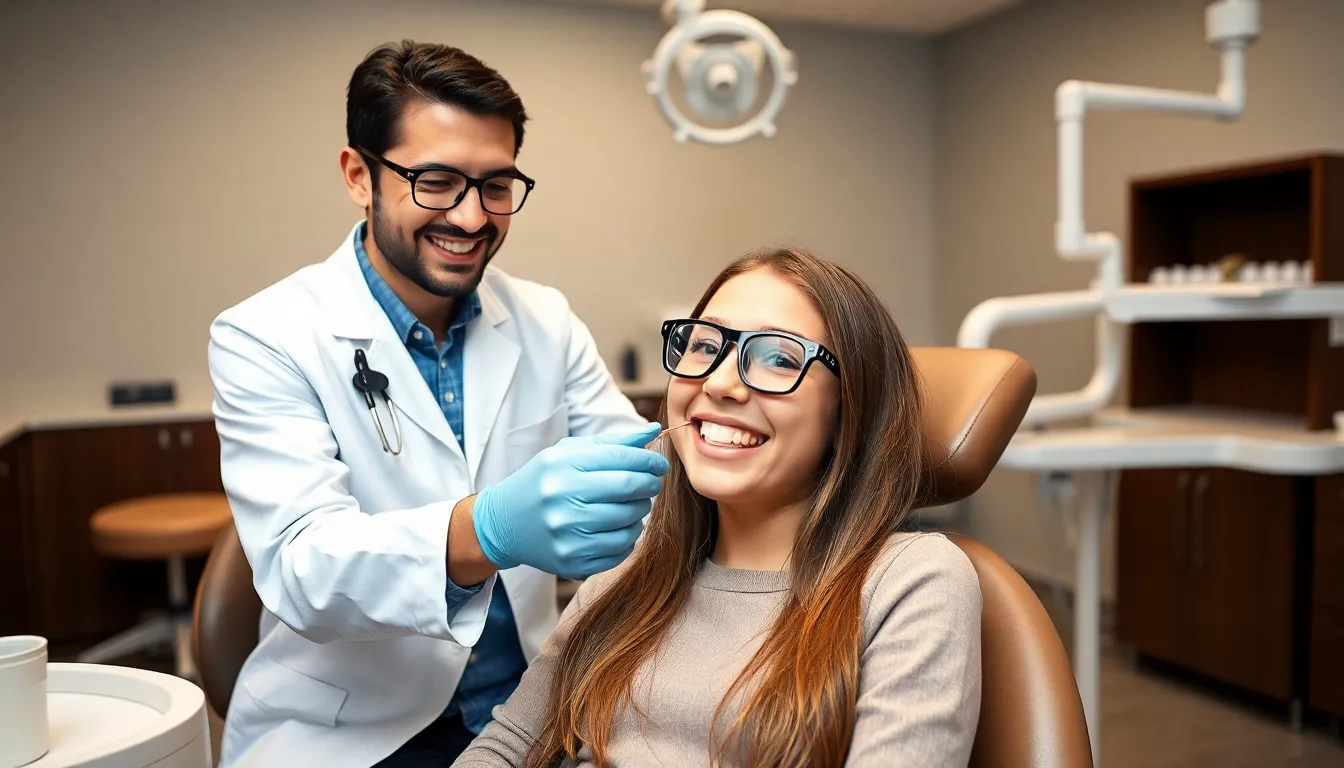
The braces installation appointment is the culmination of your preparation phase, where your orthodontist finally applies the braces to your teeth. This pivotal appointment transforms your orthodontic journey from planning to active treatment.
How Long It Takes to Put Braces On
Brace installation typically takes between one to two hours to complete—about the same length as watching a movie. During this time, your orthodontist meticulously attaches each bracket to your teeth using special dental cement. First, they thoroughly clean and dry your teeth to ensure proper adhesion. Next, they place the custom-positioned brackets on each tooth and secure them with the adhesive. Finally, they thread the archwires through the brackets and secure them with elastic bands or ligatures.
Dr. Todd B. Harris often tells patients, “The installation appointment is actually quite relaxing for most patients—you just sit back while we do all the work. Many of my patients are surprised by how quickly the time passes, especially when we let them choose a movie or their favorite music playlist during the procedure.”
The exact duration varies based on the complexity of your case and the type of braces you’re getting. Traditional metal braces might take less time to install than ceramic or lingual braces, which require more precise positioning. Your orthodontist’s team works efficiently, placing each component with care to ensure your treatment starts on the right track.
Factors That May Increase Your Number of Appointments

While most patients require 3-5 appointments before getting braces, several factors can increase this number based on your exact situation. Understanding these factors helps set realistic expectations for your orthodontic journey.
Complex Dental Issues
Complex dental conditions often necessitate additional appointments before braces can be placed. Impacted teeth require careful monitoring and sometimes surgical intervention to guide them into proper position. Patients needing maxillary expansion to widen the upper jaw typically attend extra appointments for appliance adjustments and progress checks. Periodontal complications, including gum disease, must be addressed before orthodontic treatment begins, adding preparatory visits to your schedule.
Dr. Todd B. Harris notes, “I recently treated a patient with several impacted canines who needed three additional preparatory appointments before we could place her braces. These extra visits were crucial for creating the right conditions for successful treatment.”
Age and Orthodontic Needs
Your age and exact orthodontic requirements significantly impact your appointment schedule. Growing patients (typically children and teens) often need more frequent monitoring as their jaw development affects treatment planning. Pre-existing dental conditions like cavities or weak enamel demand resolution before braces placement, adding dental visits to your timeline. Patients with bite irregularities such as severe overbites or underbites may require specialized evaluations and possibly early intervention phases, increasing the number of pre-braces appointments.
Typical Timeline: How Many Appointments Before Braces
Most orthodontic patients undergo a structured series of appointments before getting their braces installed. The precise timeline varies based on individual dental needs, but understanding the typical sequence helps set realistic expectations for your orthodontic journey.
Average Number for Most Patients
The standard braces preparation process typically involves three main appointments before the actual installation. Your first visit is the initial consultation, where the orthodontist examines your teeth, reviews your dental history, and discusses treatment goals. During this appointment, preliminary x-rays might be taken to help develop a customized treatment plan. Following this, you’ll attend a diagnostic appointment where more comprehensive records are collected, including detailed x-rays, impressions, or 3D scans of your teeth. Some patients also receive spacers during this visit to create room between teeth before braces application. The third appointment is the braces installation itself, which generally takes one to two hours as brackets and wires are carefully bonded to your teeth. After installation, you’ll continue with adjustment appointments every 4-8 weeks throughout your treatment, which typically lasts 18-24 months depending on your case complexity.
Expedited Options for Some Cases
Certain situations allow for a more streamlined approach to the braces process. Some orthodontic practices offer same-day braces for straightforward cases, combining the diagnostic appointment and installation into a single visit. Dr. Todd B. Harris notes, “For patients with minimal complications and complete dental records, we can sometimes expedite the process and reduce the number of pre-treatment visits.” Digital scanning technology has significantly improved efficiency, allowing orthodontists to create treatment plans more quickly than traditional impression methods. Patients with previously completed diagnostics from another dental provider might skip directly to treatment planning. But, expedited options aren’t appropriate for everyone—complex cases involving extractions, important alignment issues, or periodontal concerns still require the full appointment sequence to ensure optimal treatment outcomes.
How to Prepare for Each Pre-Braces Appointment
Initial Consultation Preparation
Your first orthodontic appointment sets the foundation for your entire braces journey. Bring a complete dental history, including records of previous treatments and any existing dental concerns. Make a list of questions about treatment options, costs, and timeframes to discuss with your orthodontist. Eat before your appointment as the examination may take up to an hour, during which the orthodontist will thoroughly assess your teeth, gums, and jaw structure. Many patients find it helpful to wear comfortable clothing since you’ll be reclined in the dental chair for an extended period.
Diagnostic Records Appointment Preparation
X-rays, impressions, and digital scans form the cornerstone of your treatment plan during this visit. Brush and floss thoroughly before arriving to ensure clear images and accurate impressions. Avoid wearing heavy makeup or lip products that might interfere with imaging procedures. Plan for approximately 45-60 minutes for this appointment, as creating detailed models of your teeth takes time. Patients with dental anxiety sometimes find bringing headphones with calming music helps them relax during the impression-taking process.
Pre-Treatment Dental Work Preparation
Follow any exact instructions provided by your dentist for addressing cavities, extractions, or gum disease before braces placement. Schedule these appointments with enough recovery time before your braces installation. Take prescribed medications as directed if you’ve had extractions or other dental procedures. Maintain excellent oral hygiene following any dental work to ensure your mouth is in optimal condition for braces. Dr. Todd B. Harris often reminds patients, “Investing time in resolving dental issues before braces significantly improves both comfort and results during treatment.”
Spacers Appointment Preparation
Spacers create necessary room between teeth for orthodontic bands, especially for patients with tightly positioned molars. Eat soft foods before this appointment as your teeth might become sensitive afterward. Plan your meals for the week following spacer placement, focusing on softer options that won’t dislodge the spacers. Bring over-the-counter pain relievers to take after the appointment if needed, as some discomfort is normal. One patient, Sarah, shared: “I wasn’t prepared for how different eating would feel with spacers, but having soft foods ready at home made the adjustment much easier.”
Braces Installation Appointment Preparation
This pivotal appointment transforms planning into active treatment and typically lasts one to two hours. Thoroughly brush and floss your teeth before arriving to ensure the dental cement adheres properly to clean surfaces. Eat a satisfying meal beforehand, as you might experience discomfort when eating immediately after getting braces. Bring lip balm to prevent dry lips during the lengthy procedure where your mouth will remain open. Consider downloading movies, podcasts, or music to your phone to keep yourself entertained during the installation process.
What to Bring to Every Appointment
Your insurance information and payment method should accompany you to each visit for seamless administrative processing. A list of current medications helps your orthodontist avoid potential complications with treatment. A small dental care kit including a toothbrush, toothpaste, and floss enables you to clean your teeth before examinations if needed. A notebook or phone app for recording care instructions ensures you don’t forget important details about maintaining your orthodontic appliances. Bringing a supportive friend or family member can provide both emotional support and an extra set of ears for remembering important information.
Conclusion
The journey to getting braces typically spans 3-5 appointments designed to ensure your orthodontic treatment is perfectly customized to your needs. From your initial consultation to the exciting day your braces are installed you’ll experience a carefully planned sequence of visits that build upon each other.
Remember that your orthodontic timeline may vary based on your unique dental situation. Complex cases might require additional appointments while straightforward treatments could be expedited.
By knowing what to expect and properly preparing for each appointment you’ll set yourself up for a smoother braces experience. The effort invested in these preliminary visits pays off with more effective treatment and eventually the beautiful smile you’ve been looking forward to.
Frequently Asked Questions
How many appointments do I need before getting braces?
Typically, you’ll need 3-5 appointments before getting braces. This includes an initial consultation, diagnostic records appointment, and possibly appointments for spacers or addressing existing dental issues. The final appointment is when your braces are actually installed. This sequence ensures your orthodontic treatment is properly planned and customized to your specific dental needs.
What happens during the initial consultation for braces?
During the initial consultation, your orthodontist will evaluate your dental health, examine your bite, and discuss your treatment goals. They’ll perform a comprehensive examination to identify any underlying oral health issues and explain various treatment options, including different types of braces. You’ll also receive an estimated treatment timeline and have the opportunity to ask questions about the process.
What are diagnostic records and why are they necessary?
Diagnostic records include X-rays, photographs, and impressions or digital scans of your teeth. These records are essential for developing your customized treatment plan as they provide detailed information about your dental structure. Your orthodontist uses these records to analyze your specific case, determine the optimal approach for moving your teeth, and create a treatment strategy tailored to your unique needs.
Do I need spacers before getting braces?
Not everyone needs spacers, but they’re often placed about one week before braces for patients with tightly positioned teeth. These small rubber or metal devices create space between your teeth, particularly around molars where orthodontic bands need to fit. While they may cause temporary discomfort, spacers are crucial for creating the foundation needed for effective orthodontic treatment in many cases.
How long does the braces installation appointment take?
The braces installation appointment typically takes between one to two hours. During this time, your orthodontist will clean and dry your teeth, place brackets in custom positions, secure them with dental adhesive, and thread archwires through the brackets. The exact duration depends on the complexity of your case and the type of braces being installed. Many orthodontists offer entertainment options to help you relax during this procedure.
Can I get braces in a single day?
Some orthodontic practices offer same-day braces for straightforward cases by combining the diagnostic appointment and installation into one visit. However, most patients require the complete sequence of appointments to ensure optimal treatment outcomes. Complex cases, existing dental issues, or the need for preparatory procedures like spacers typically rule out same-day options.
What factors might increase the number of appointments I need?
Complex dental issues such as impacted teeth, periodontal problems, or severe crowding may increase your appointment count. Your age can also be a factor—growing patients sometimes require additional monitoring. Pre-existing conditions like cavities or gum disease must be resolved before braces placement, potentially adding dental visits. The type of braces you choose may also affect your appointment schedule.
What should I bring to my orthodontic appointments?
For your initial consultation, bring your complete dental history, insurance information, and a list of questions. For all appointments, bring your dental care kit (toothbrush, toothpaste, floss) to clean your teeth if needed. Consider bringing a supportive companion, especially for longer appointments like the installation. If you’re sensitive to discomfort, ask in advance if you can take pain relievers before certain procedures.
Will I need teeth extractions before getting braces?
Some patients require tooth extractions before braces to create space for proper teeth alignment, especially in cases of severe crowding. Your orthodontist will determine this during your diagnostic phase. If extractions are necessary, this will add at least one appointment to your pre-braces schedule. The healing time required after extractions may also affect your overall treatment timeline.
How should I prepare for getting my braces put on?
Before your braces installation appointment, maintain excellent oral hygiene and complete any required dental work. Eat a comfortable meal beforehand, as you may experience some discomfort afterward. Take photos of your smile “before” to track progress. Stock up on soft foods for the days following installation. If recommended, take over-the-counter pain relievers before your appointment to minimize discomfort.

